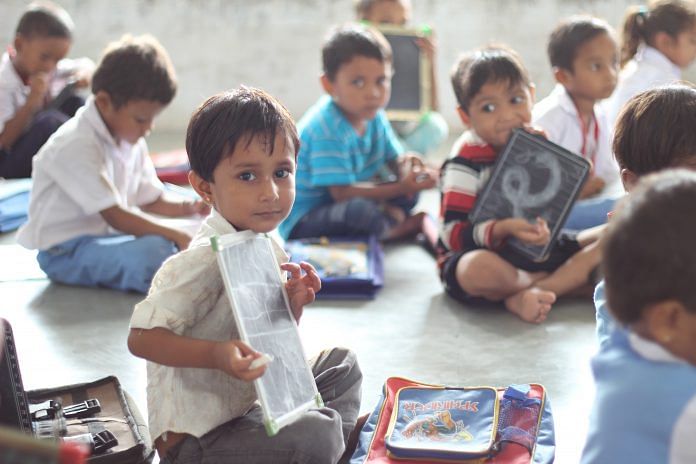The latest facial recognition technology identified almost 3,000 missing children in four days.
The 2017 Oscar-nominated film Lion tells the story of Saroo Brierley, who at age five was separated from his family.
One dark night, while searching for his brother at a train station in the Indian city of Burhanpur, near his rural home, Saroo accidentally ended up on a train bound for Kolkata, more than 1,000 kilometres away.
Unable to speak the local language, Bengali (he spoke Hindi), and not knowing the name of his home village, Saroo ended up surviving on the streets of Kolkata before being placed in an orphanage. He was eventually adopted by an Australian couple and grew up in Tasmania.
It was 25 years before he managed to pinpoint his Indian hometown on a map, thanks to patchy childhood memories and Google Earth.
New tech, different story
Had Saroo had gone missing today, he might have been found almost immediately. India has begun to use technology to reunite lost children with their families, and the process can be as swift as a few days.
Police in New Delhi recently trialled facial recognition technology and identified almost 3,000 missing children in four days.
The software scanned the pictures of 45,000 children living in children’s homes and orphanages. Between April 6 and 10, it was able to match 2,930 children with photographs held on the lost child database run by the government.
The Track Child portal is a national tracking system for India’s lost and vulnerable children. It holds details of the children as well as their photographs.
Figures from TrackChild reported by the New York Times suggest 237,040 children went missing in India between 2012 and 2014.
Reuniting refugees
Technology is also helping refugees to track down their families.
In 2005, Danish brothers David and Christopher Mikkelsen met a young Afghan refugee called Mansour. Four months after fleeing Kabul and the Taliban with his parents and five siblings, Mansour became separated from them, ending up in Denmark with no idea what had happened to his family or where they were.
While helping Mansour search for his family, the Mikkelsens realized that the technology to share information about separated families between agencies and across borders didn’t exist. So in 2008 they launched REFUNITE.
REFUNITE is an online database that allows users to search for family at the click of a button. It allows refugees to take the search into their own hands rather than relying on agencies for help.
Almost 10 million searches have been performed so far by over 600,000 registered users.
The technology has reunited mothers and sons, sisters and brothers, nephews and aunts.
The importance of data
What will help us respond better to 21st century displacement crises?
☑️ More data.
☑️ Better data.
☑️ Stronger data.
That's why we've just taken our partnership with the @WorldBank to the next level: https://t.co/ib2xQVgXM0 pic.twitter.com/mzVF4VvO97
— UNHCR, the UN Refugee Agency (@Refugees) April 20, 2018
But technology is only as good as the data behind it.
To this end, the United Nations Refugee Agency (UNHCR) and the World Bank Group recently signed an agreement to establish a new centre that aims to improve the collection, analysis and dissemination of data around refugees.
The Joint Data Centre on Forced Displacement will collect information on (among other things) gender, age, income, skills and health.
The data will be made available to help aid groups and policy-makers. It will also promote the innovative use of technology in order to help refugees, internally displaced and stateless people, returnees, asylum-seekers and host populations.
This article was originally published by the World Economic Forum. Read it here.



